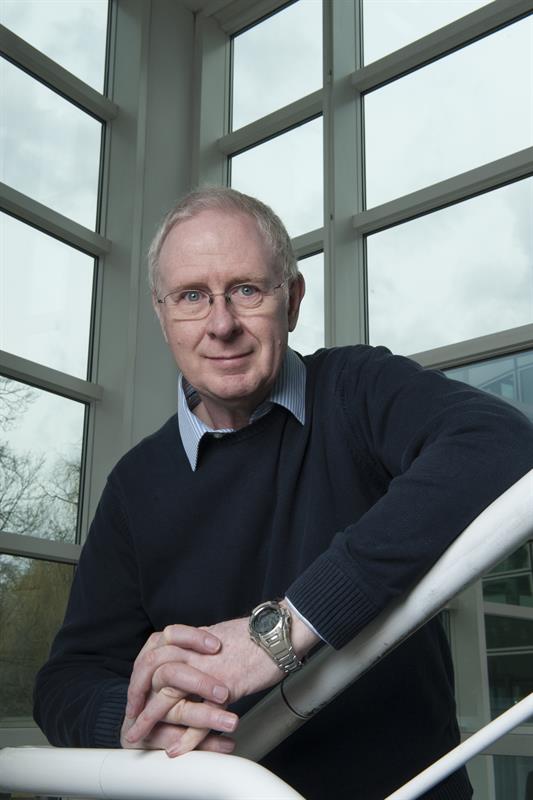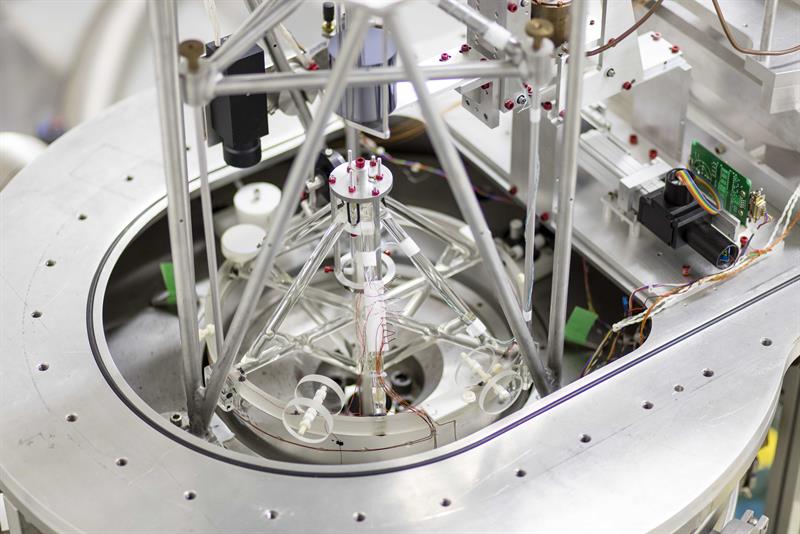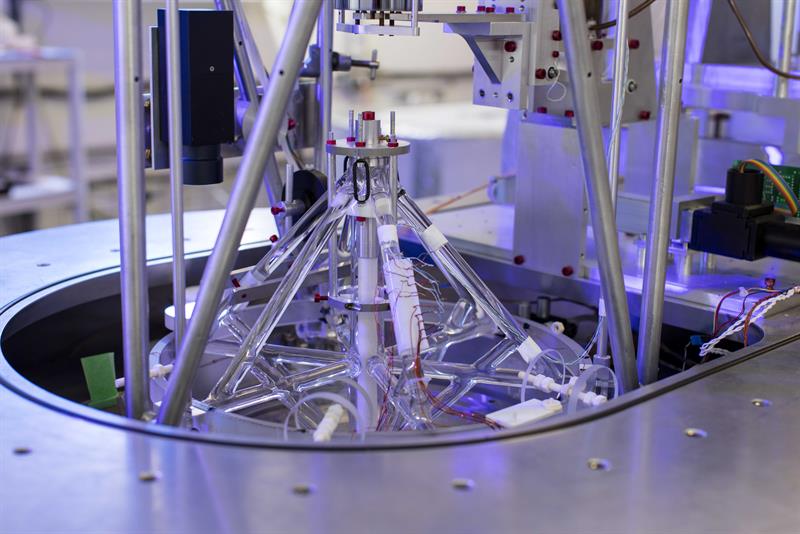The IPK is a metallic cylinder made of 90% platinum and 10% iridium which has been closely guarded at the Paris headquarters of the Bureau International des Poids et Mesures (BIPM) since 1889. As such, it’s the artefact which defines the unit of mass in the SI system of measurement. According to BIPM, ‘the kilogram is the unit of mass; it is equal to the mass of the IPK’.
There are seven base units in the SI system: ampere; kelvin; second; metre; candela; mole; and kilogram. At the moment, the kilogram is the last of these base units to be defined by a physical artefact. But work underway around the world has reached the point where the IPK may be retired in the near future.
In 2005, the International Committee for Weights and Measures, recommended that the kilogram be redefined in terms of a fundamental constant of nature and the General Conference on Weights and Measures then agreed in principle that the kilogram should be redefined in terms of Planck’s constant.
So how do you get from Planck’s constant to the kilogram? The answer to that is a Kibble Balance, also known as a Watt Balance.
Dr Ian Robinson, a Fellow at the National Physical Laboratory (NPL), has been working on the Kibble Balance since it was first conceived. He said: “The term ‘Watt Balance’ confuses people. It wasn’t invented by James Watt; rather, it measures Watts. Naming it a Kibble balance is a fitting tribute to Dr Bryan Kibble, who died in 2016.”
It was Dr Kibble who thought up the idea of the balance in the mid 1970s, aiming to link electrical and mechanical units by equating electrical and mechanical virtual power. “At the time,” Dr Robinson noted, “SI resistance was available via the calculable capacitor, allowing the Kibble balance to determine SI voltage or current via Ohm’s Law.”
While that approach couldn’t meet the uncertainty required by the scientific community, the discovery in the 1980s of the Quantum Hall Effect brought, according to Dr Robinson, ‘unprecedented stability and reproducibility’.
“The Kibble balance is one thing which NPL can claim as its own,” Dr Robinson continued. “The concept was thought up here by Bryan Kibble and nobody else was thinking in that way. The Kibble Balance will, effectively, become the way in which mass will be determined in the future.”
Dr Robinson said that, in theory, mass could be defined by equating the mechanical energy needed to raise a mass over a known distance to the amount of electrical energy consumed by a motor in raising the mass. But losses mean the values don’t equate satisfactorily.
You could ‘weigh’ the mass against the force produced by a current flowing through a coil suspended in a magnetic field. “Because the mass doesn’t move,” Dr Robinson said, “there are no relevant losses. But you do need to know the relationship between current and force and that depends on field strength and the length of wire in the coil.”
Dr Kibble realised that if a second experiment was performed, in which the mass was removed and the coil was moved through the field at a measured velocity, then the relationship between the voltage generated by the coil and its velocity would be exactly the same as the relationship between the force and the current.
The results of the two experiments allow electrical power to be equated to mechanical power. If you know voltage from the Josephson effect, current from the quantum Hall effect and Josephson Effect, acceleration due to gravity from a local gravimeter and velocity from a laser interferometer, it is possible to define mass in terms of Planck’s constant. “It’s not easy to do,” Dr Robinson said, “but it is possible to do the experiment to the level of uncertainty that you require.”
Having developed a prototype Kibble balance, NPL sold it to Canada’s National Research Council (NRC) in 2009, which embarked on a programme to improve its performance.
Dr Barry Wood, an NRC Fellow, has not only been closely involved with the improvement programme, but also with the international effort to replace the IPK. “We did some preliminary measurements, which were OK, but then we rebuilt the suspension of the coil. That allowed us to do alignment in vacuum in situ and to get around a series of problems, including reducing noise; it’s probably why NPL had inconsistent results over the years and was a major step forward.
“Then, in late 2013,” he continued, “we generated a set of results which were, at the time, the best achieved. We used four masses of different types and got good results.”
NRC’s initial results measured Planck’s constant to an uncertainty of 68ppb, while the second round cut that to 35ppb.
“We then stripped it down again and found another set of problems,” Dr Wood recalled, “mainly to do with noise and the interferometer. We changed some of the electronics and optimised the data acquisition system to allow data to be acquired more quickly.” More tests with the four masses followed, allowing uncertainty to be cut to 19ppb. “But our latest result is 9.1ppb,” Dr Wood enthused.
What helped to achieve that result? “Lots of little improvements,” Dr Wood explained. “It’s a huge experiment, with a lot of different parts. We asked whether a particular change would make a difference or whether it might be too hard to fix. We’ve been fixing each thing as we go and it’s been a long process, with hundreds of changes.
NPL’s Dr Robinson believes that, having determined the value of Planck’s constant to an uncertainty of 9.1ppb, the Kibble balance will, effectively, become the way in which mass will be determined in the future.
“If you have enough Kibble balances and they are independent of each other, they can check each other. That’s powerful and one of the reasons why this work continues. We’re now looking to replicate them and labs around the world should be able to run them.”

According to Dr Robinson, if you have enough balances – even if they’re not at the highest accuracy – you can get good results. “If they are all working correctly, their results will be scattered,” he explained. “The mean standard error of these results is the square root of the accuracy. So an accuracy of, say, 16ppb per balance means an overall accuracy of 4ppb – as long as those balances are independent.”
What does the NRC plan to do now? “The work is slowing,” Dr Wood admitted. “We could, perhaps, start again and address things we thought were too difficult, but a result of 9.1ppb is ‘pretty good’, so we can take our time.
“The work will continue, but we won’t be determining Planck’s constant in the future. Now, we’ll be working on a unit of mass for Canada.”
| "You have to keep paddling particularly when there's electronics involved." Dr Ian Robinson, Fellow at the National Physical Laboratory |
Having sold its prototype Kibble balance to the NRC, NPL is now developing a new balance. “Building the initial balance was an enormous investment,” Dr Robinson asserted. “It took 35 person-years to develop the first one, but they’ll be cheaper in the future because there won’t be the need to do research.”
He said the new version of the Kibble balance is ‘simplified, but accurate’. “We’re not sacrificing accuracy,” he continued. “We have new ways which promise accuracy, but with cost effectiveness.
“We’re working our way towards this via a couple of machines which will check the technology. We’ll then go for a finished machine and are looking to make this in 2020 or so.”
One aspect of the project is to update the electronics. “You have to keep paddling, particularly when there’s electronics involved,” he noted. “The industry moves quickly and things become obsolete in a couple of years. We’ll need to keep the electronics up to date so we can maintain the balance.”

| Above: National Research Council Canada's Kibble Balance |
At the moment, Dr Robinson and his colleagues are updating electronic components that are probably 20 years old. “It’s so we have a chance of manufacturing the balance. That work will continue because we can’t choose parts that will become unavailable.”
NPL’s latest balance features what Dr Robinson calls ‘old bits of kit’. “However, in the next few months, we’ll be shrinking the electronics from something the size of a desk to something with an A4 footprint that’s 90mm high.
“We know how it’s going to happen,” he continued, “but there’s an enormous amount of electronics involved – everything from microwaves to lasers to measurement of picovolts.”
Now Planck’s constant has been set, is that the end of the IPK? “A series of committees is involved,” Dr Wood pointed out. “The BIPM’s Consultative Committee for Units said ‘do your best’ and submit results by July 2017 and everyone did that to the best of their abilities.
“Now, things will go to the General Conference on Weights and Measures in November 2018. All major countries have endorsed it so, unless they change their minds, it’s a done deal.
“So far,” he concluded, “we’ve been measuring Planck’s constant. Now, we’ve optimised the value and if you put that value into our measurement, it will tell you what the mass is. And we could also tell BPIM what the mass of the IPK really is.”
| Below: A close-up view of NRC Canada's Kibble Balance |

| SI units set to change Following the General Conference on Weights and Measures in November 2018, there will still be seven base units in the SI system – second, metre, kilogram, ampere, kelvin, mole and candela. Of these, the kilogram, ampere, kelvin and mole will be redefined by choosing exact numerical values for the Planck constant, the elementary electric charge, the Boltzmann constant and the Avogadro constant, respectively. The remaining three base units are already defined by physical constants. “The revision of the SI will fix the numerical values of the Planck constant (h) and the elementary charge (e),” said Dr Robinson. “The Josephson constant (2e/h) and the von Klitzing constant (h/e^2) will have new fixed numerical values, so there will be no need for the 1990 conventional values. “The Josephson Effect and Quantum Hall Effect can then be used to make direct SI electrical measurements, to their full accuracy. There will be a final, small, change to the electrical units as the world switches to the revised SI, but the change will reunify the SI and make it fit for the 21st Century.” |













